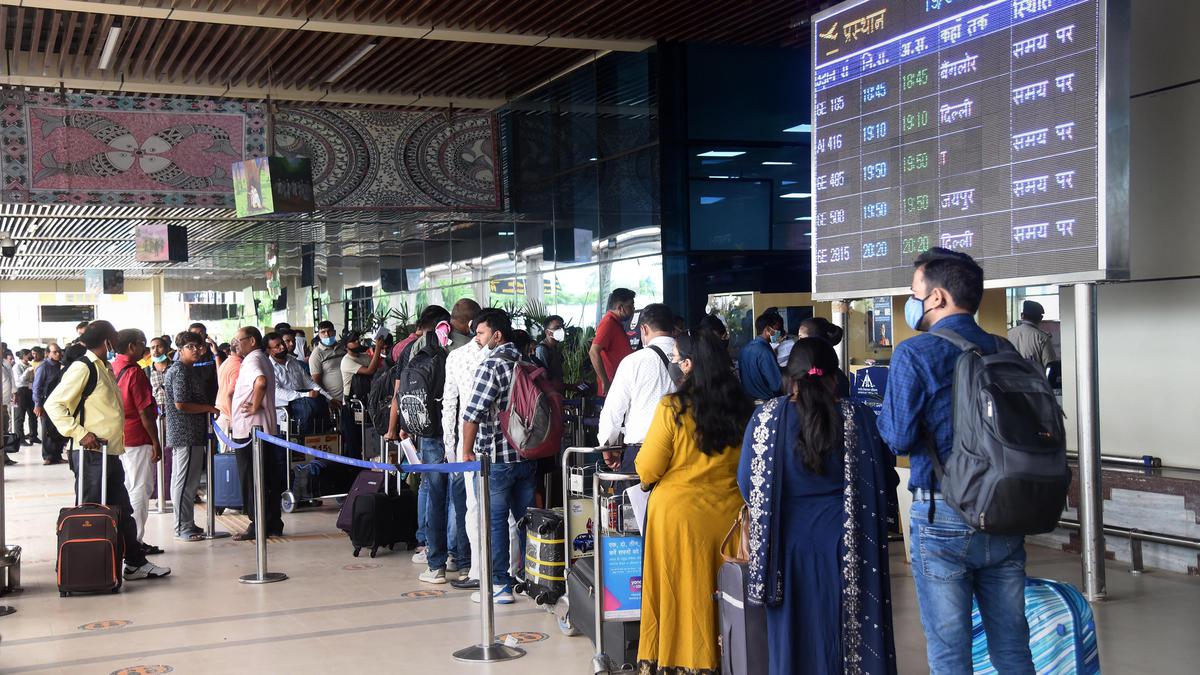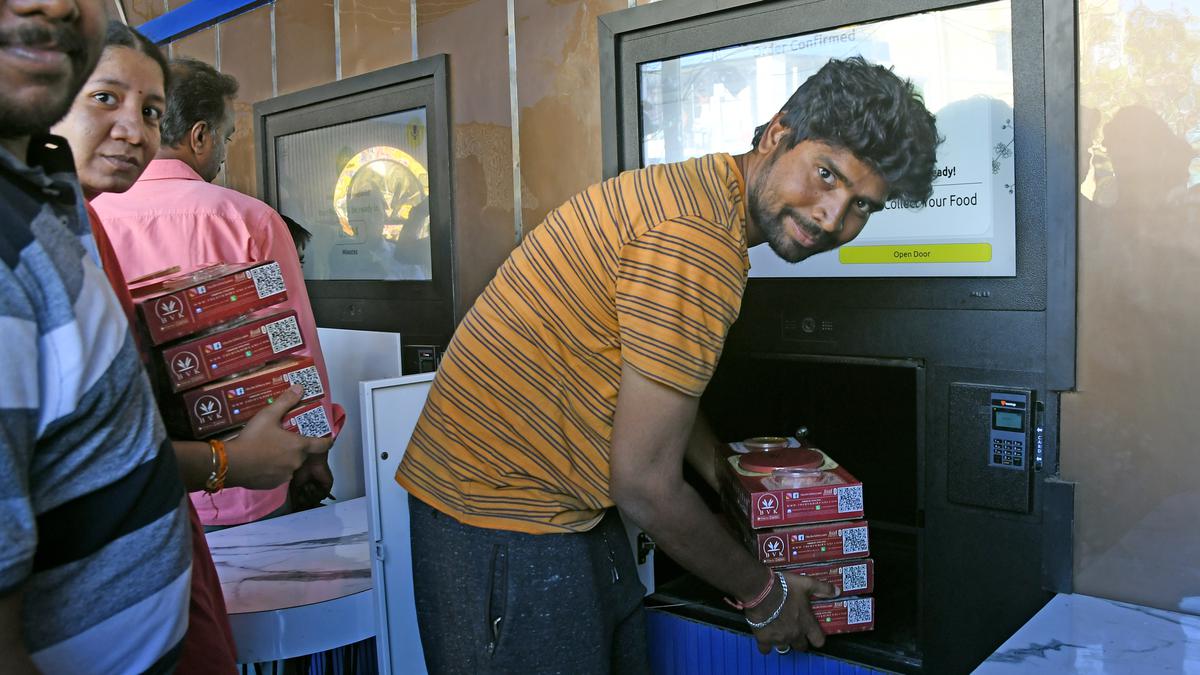A Great Indian Hornbill flying over a green canopy dotted with shades of auburn captures the majesty of the bird and its home in the wilderness in Wayanad.
Flight of the Great Indian Hornbill.
| Photo Credit:
Abhishek Jain
Clicked by Abhishek Jain, one of the 80-plus birders who have come together to observe the birth centenary of KK Neelakantan, aka Induchoodan, the grand savant of birders in Kerala, it is one of the snaps on display at an exhibition of photographs of birds to honour Induchoodan.
The exhibition, Induchoodante Pakshikal (Induchoodan’s Birds), organised jointly by Kerala Natural History Society (KNHS) and Warblers and Waders, has 303 photographs at Museum Auditorium as homage to Induchoodan, whose birth centenary was on April 9.
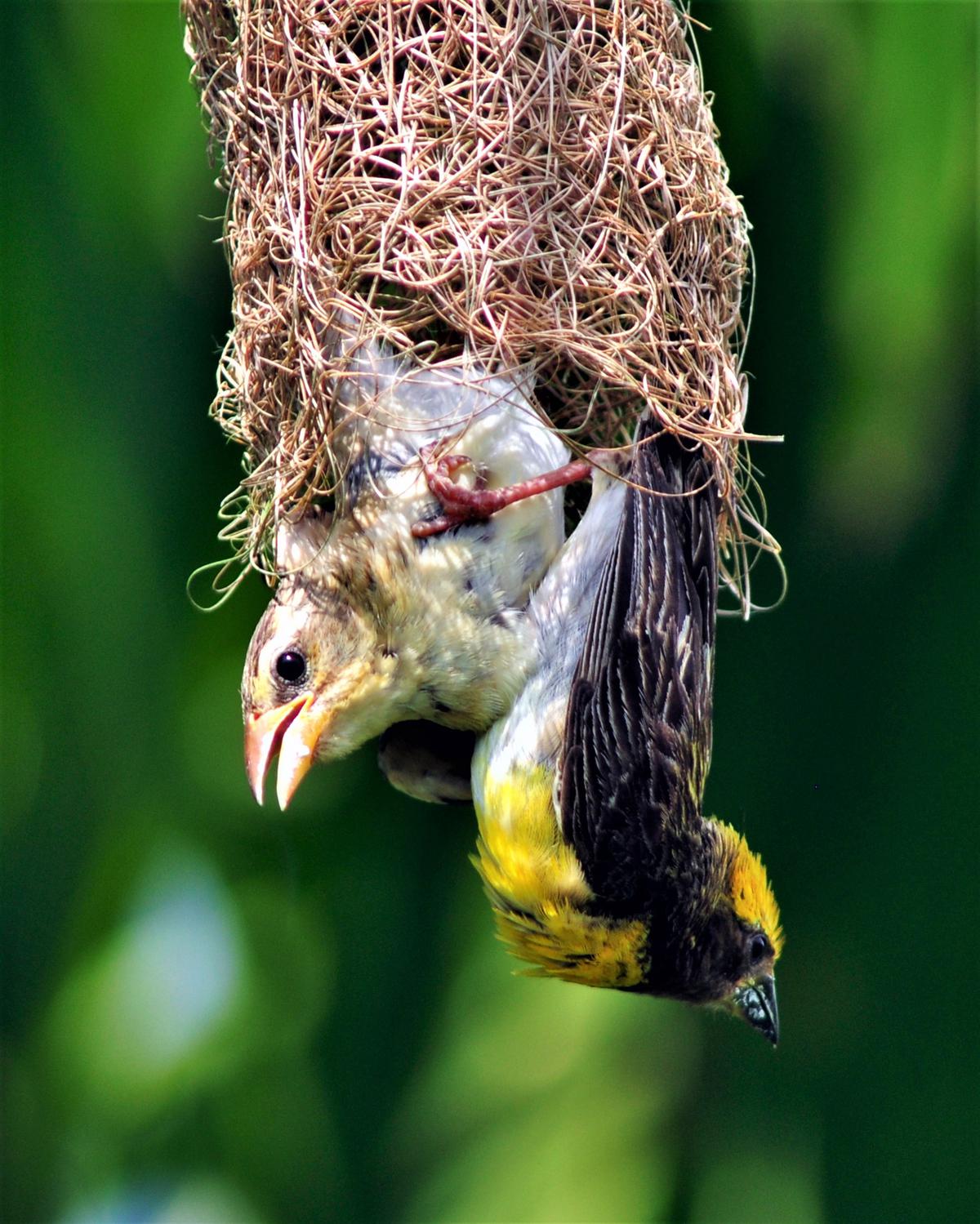
Female weaverbird checking the nest made by the male bird.
| Photo Credit:
PK Uthaman
Veteran TNA Perumal, the late K Jayaram, C Susanth, Rahana Rafeek, Resmi Varma, PS Sivaprasad, Abhijit AV, Praveen Mohandas and PK Uthaman are some of the lensmen participating in the exhibition.
Birds in every imaginable shade catch the eye as the birders name them effortlessly — peacocks, tiny Pale-billed Flowerpecker, sunbirds in vibrant colours, Blue-throated Flycatcher, Malabar trogon, Malabar Whistling Thrush….
A series of photographs of a Palm Swift show it visiting its nest to feed its young and then flying away. “It was taken in a minute’s time as it is truly a swift bird that builds it nest in the folds of palm leaves. But I managed to capture it on my camera,” says PK Uthaman, a keen birder-photographer and member of KNHS, which was founded by Induchoodan in 1974.
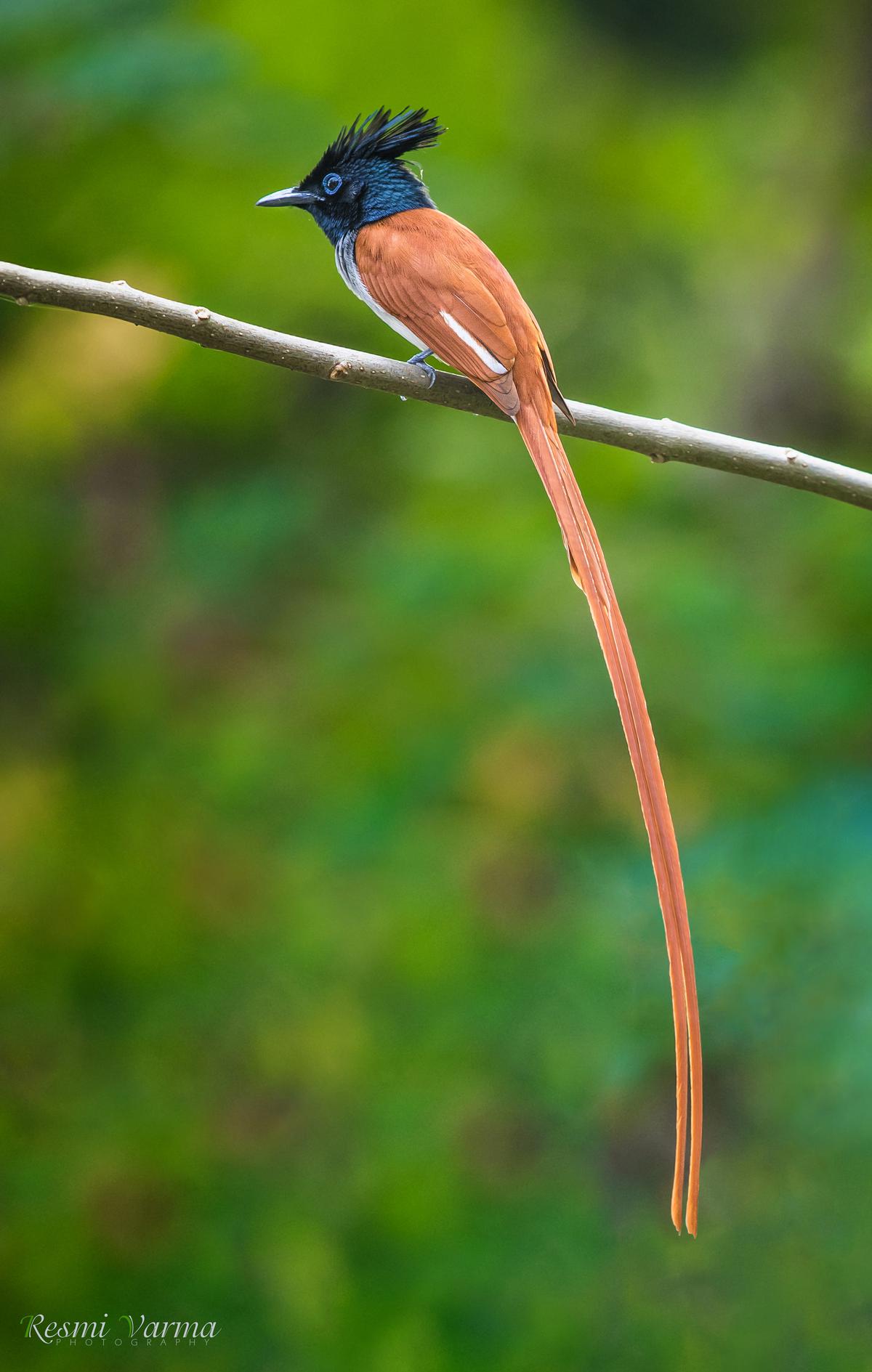
Paradise Flycatcher
| Photo Credit:
Resmi Varma
A young Paradise Flycatcher with its long red tail, a migratory bird from Kashmir and the Himalayas, clicked by Resmi Varma inside the green environs of Kowdiar Palace, is another eye-catching photograph on display.
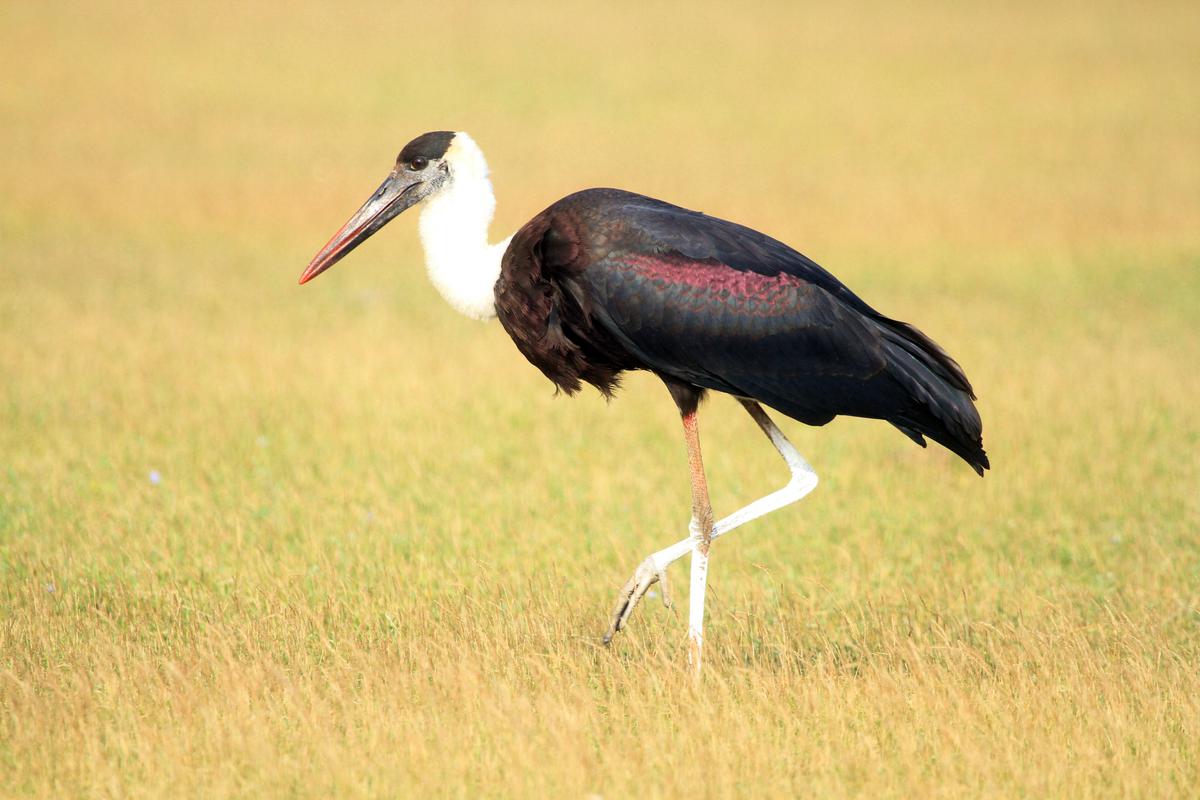
White-necked Stork
| Photo Credit:
Rahana Rafeek
Two kinds of storks — White-necked Stork and Open-billed Stork, the only storks seen in Kerala, captured by Rahana Rafeek, showcase the distinctive features of the birds.
A flock of Malabar Pied Hornbill dust bathing, clicked by former Chief Conservator of Forest VK Uthaman, is a rare one in the collection. Another rare sighting of a forest bird is that of a Broad-billed Roller, captured by C Susanth, coordinator of Warblers and Waders.
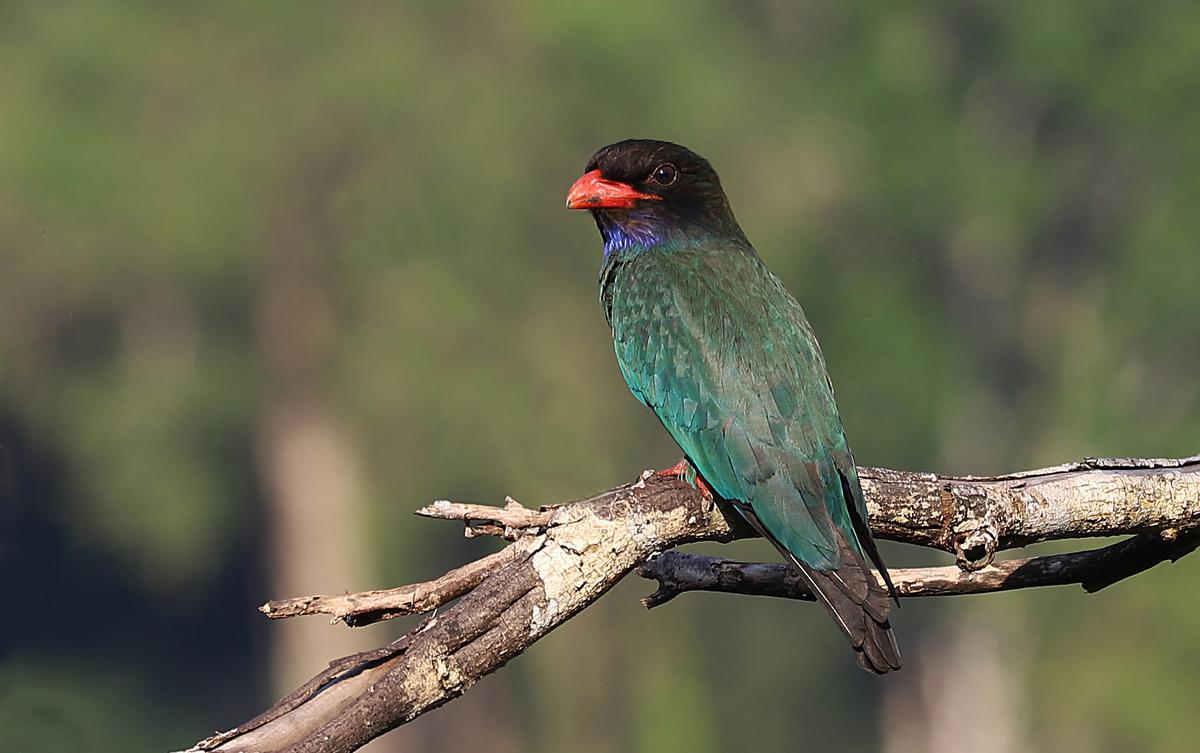
Broad-billed Roller
| Photo Credit:
C Susanth
“We succeeded in collecting the photographs of all the birds Induchoodan identified for the exhibition. The snaps include 67 kinds of birds, both male and female,” explains Susanth.
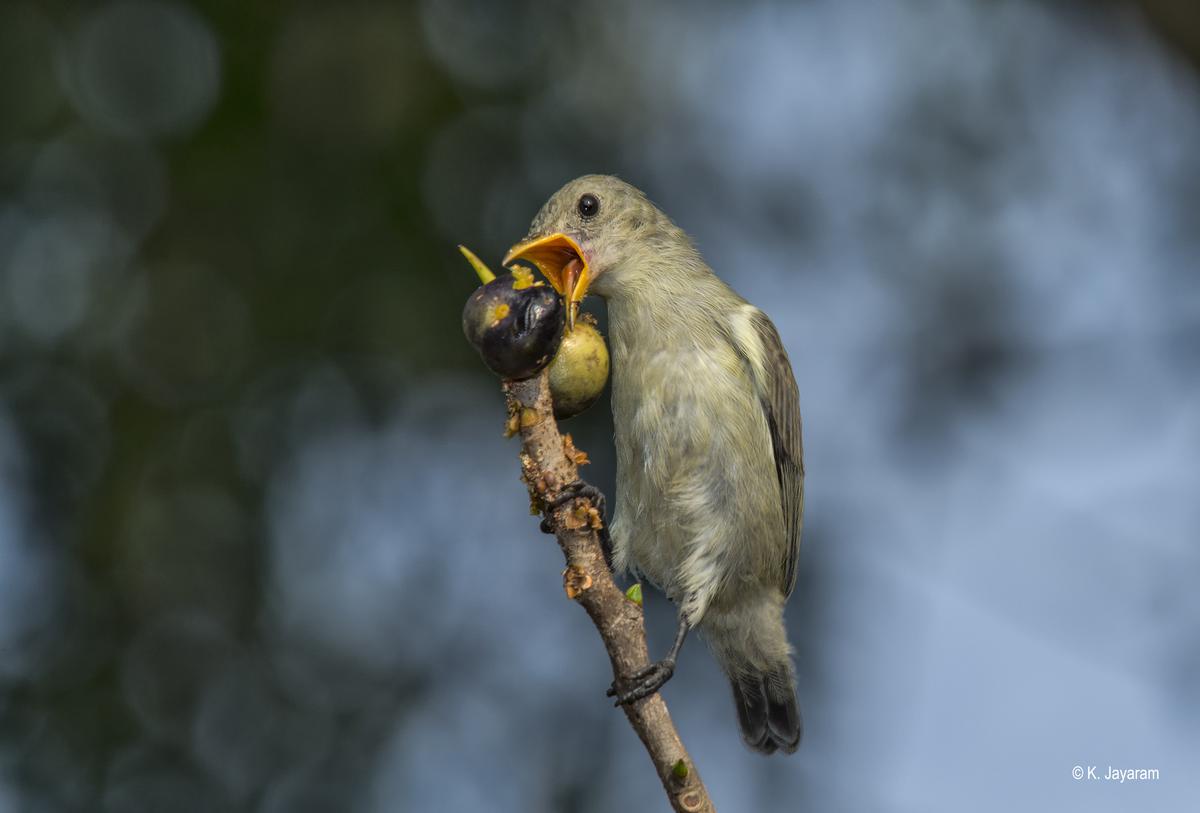
Tickell’s flowerpecker is one of the smallest birds seen in Kerala.
| Photo Credit:
K Jayaram
Uthaman says that although they wanted the exhibition to coincide with Induchoodan’s birth anniversary, they were unable to collect all the photographs of the feathered flock mentioned in Induchoodan’s seminal book Keralathile Pakshikal (Birds of Kerala), first published with illustrations in 1958. He had identified 267 birds in Kerala.
The eminent birder taught English literature at University College from 1971 to 1978 and was a resident of Thiruvananthapuram till 1985 before he returned to Kavassery in Palakkad, where he hailed from.
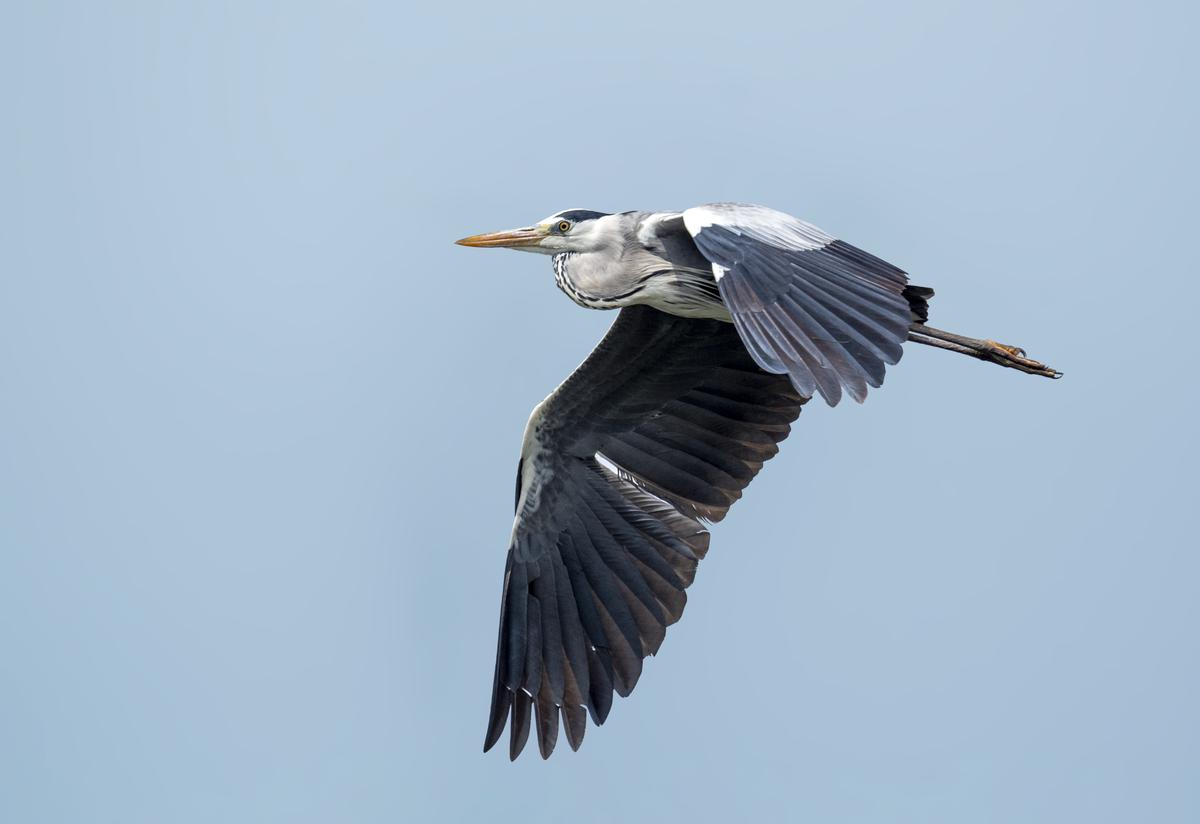
A Grey Heron in flight
| Photo Credit:
PS Sivaprasad
Uthaman recollects that Induchoodan used to tell his disciples that he first began reading about birds in Arthur Mee’s Book of Knowledge, a children’s encyclopaedia. That sparked his interest in his surroundings and Kavassery was blessed with streams, woods and hills that piqued his interest in winged visitors.
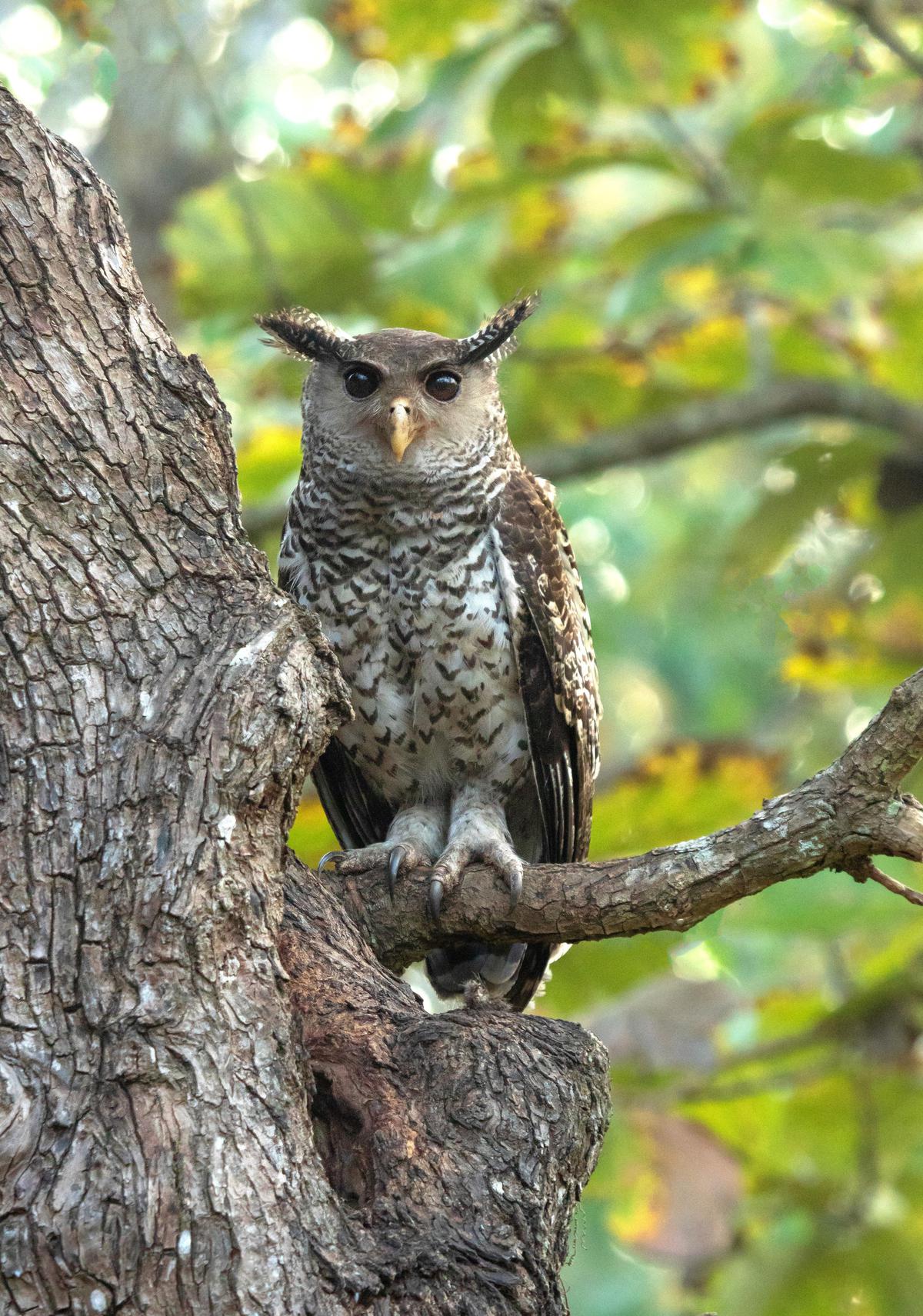
Forest Eagle Owl
| Photo Credit:
Abhijith AV
“Induchoodan’s book Keralathile Pakshikal was instrumental in grooming generations of bird watchers and nature lovers in Kerala. I met him during the movement to save the Silent Valley in 1979 and began working with him on conservation efforts. We founded the Thiruvananthapuram Prakritihi Samarakshna Samithi. Unfortunately, it became defunct after the demise of poet-activist-nature-lover Sugathakumari,” says Uthaman.
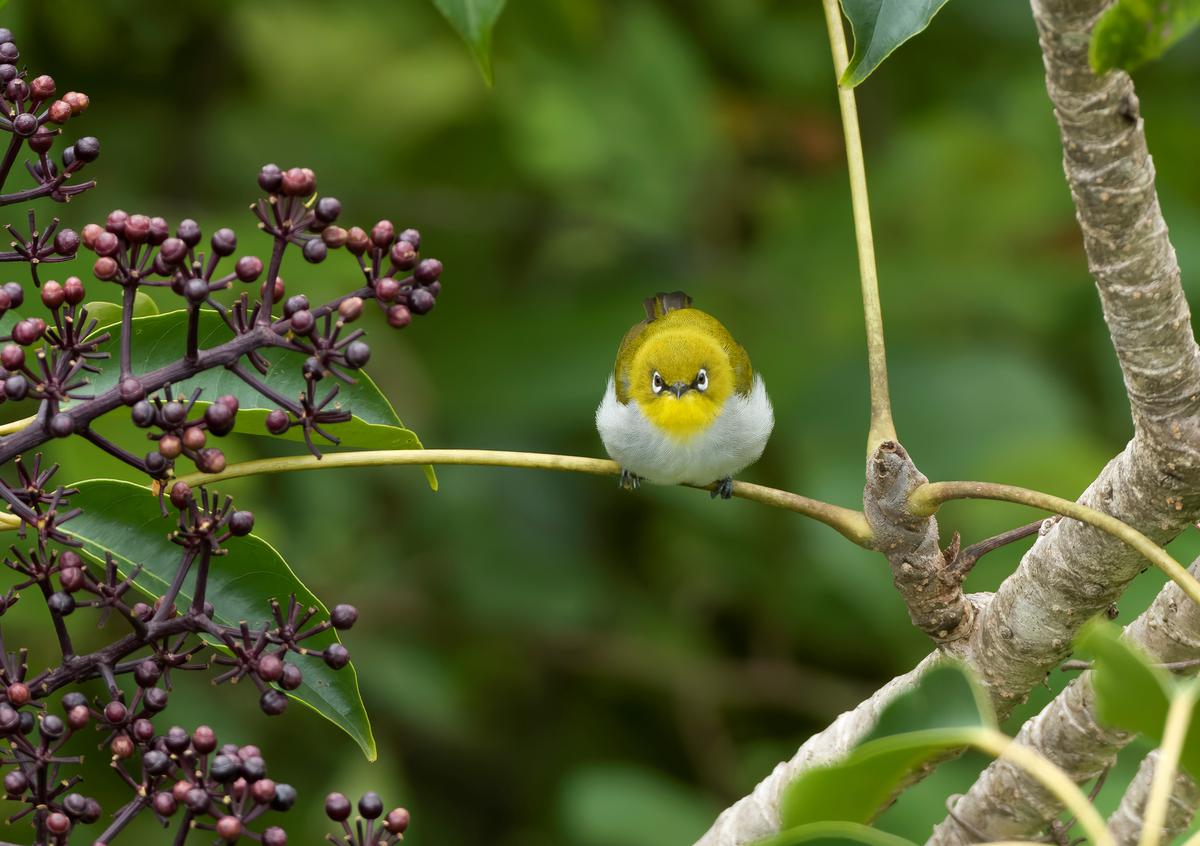
Oriental white-eye
| Photo Credit:
Apitha Namassivayan
The exhibition of birds highlights the impact of environmental changes on the habitat of the avian population. “For instance, the Indian vulture species, once abundant in India, has now been classified as critically endangered. There is a small population of vultures in Wayanad,” explains Uthaman, pointing to a snap of a vulture’s nest. The Malabar Pied Hornbill has become a rare bird in Kerala although it is seen easily in the forests of Karnataka.
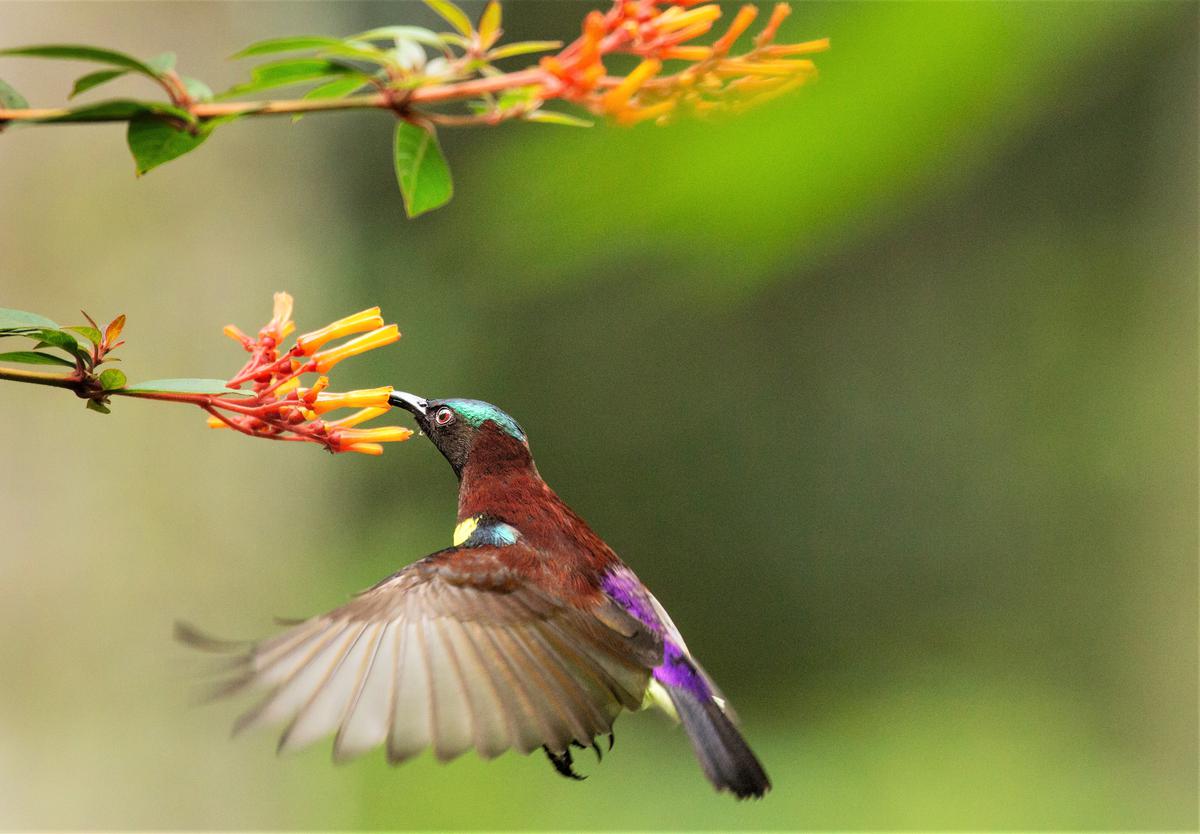
Male purple-rumped sunbird
| Photo Credit:
AV Manoj
Pointing to a photograph of a cattle egret perched next to a fisher woman, Uthaman says that since many wetlands have been filled in Thiruvananthapuram, cattle egrets, once seen only near paddy fields and water bodies, have now become a common sight near markets and garbage dumps. “I took this picture near the Palayam fish market,” he adds.
As the mercury shoots up, the White-necked Stork, once seen only in areas around Palakkad, can now be seen in Thiruvananthapuram, says Sushanth. He rues that though there are many birders and bird photographers, not all of them are interested in the conservation of nature. They hope that exhibitions like these make youngsters aware of the importance of conservation.
The exhibition is on at Museum Auditorium till September 24. It is from 10am to 7pm.


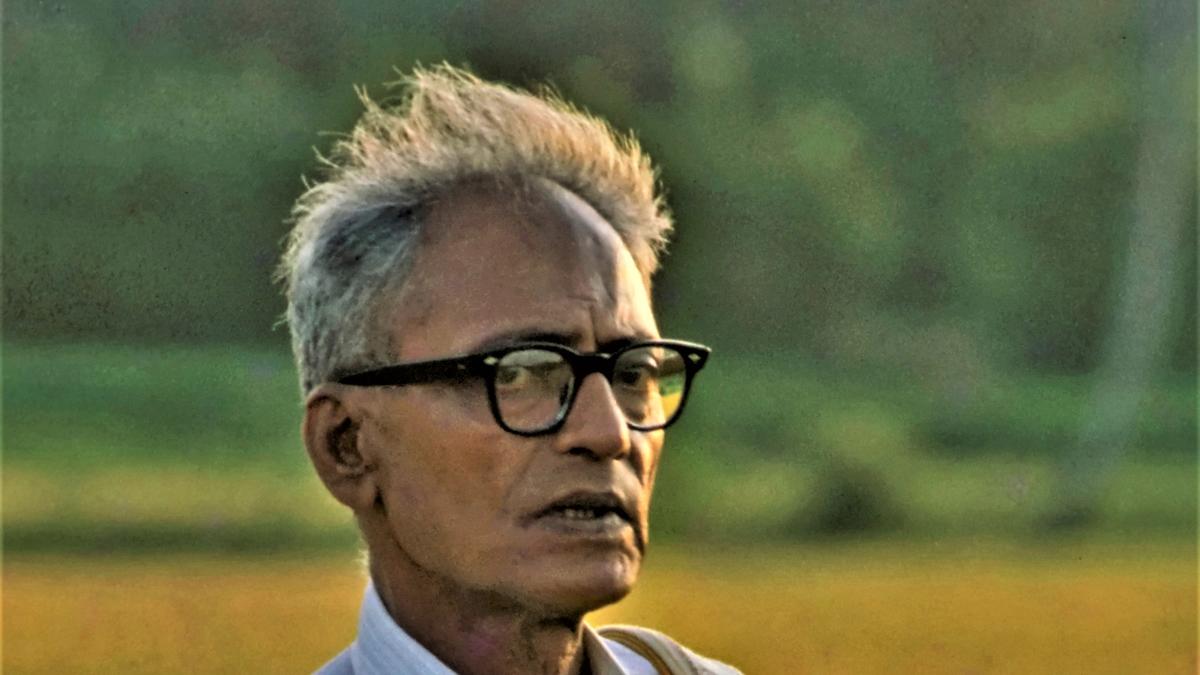.jpg)
